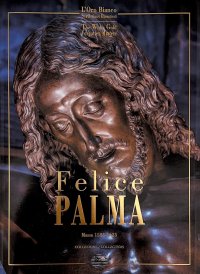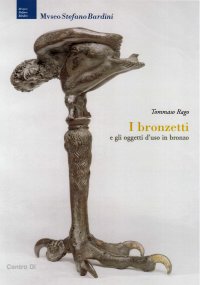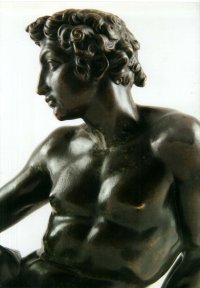Felice Palma. Massa 1583-1625. Collezione / Collection.
Texts by Andrei Cristina, Ciarlo Nicola, Federici Fabrizio, Claudio Casini and Sara Ragni.
Italian and English Text.
Pontedera, 2024; bound in a case, pp. 289, b/w and col. ill., b/w and col. plates, cm 24,5x34.
(L'Oro Bianco. Straordinari Dimenticati. The White Gold Forgotten Masters).
cover price: € 160.00
|
Books included in the offer:
Felice Palma. Massa 1583-1625. Collezione / Collection.
Texts by Andrei Cristina, Ciarlo Nicola, Federici Fabrizio, Claudio Casini and Sara Ragni.
Italian and English Text.
Pontedera, 2024; bound in a case, pp. 289, b/w and col. ill., b/w and col. plates, cm 24,5x34.
(L'Oro Bianco. Straordinari Dimenticati. The White Gold Forgotten Masters).
FREE (cover price: € 160.00)
Le botteghe del marmo
Italian and English Text.
Ospedaletto, 1992; bound, pp. 153, 10 b/w ill., 60 col. ill., cm 24x29.
(Immagine).
FREE (cover price: € 34.49)
Museo Stefano Bardini. I Bronzetti e gli Oggetti d'Uso in Bronzo
Edited by Nesi A.
Firenze, 2009; paperback, pp. 191, 102 b/w ill., 7 col. ill., cm 17x24,5.
(Museo Stefano Bardini).
FREE (cover price: € 30.00)
Bronzetti e Rilievi dal XV al XVIII Secolo
Bologna, 2015; 2 vols., bound in a case, pp. 729, ill., col. plates, cm 21,5x30,5.
FREE (cover price: € 90.00)
Le scale di Vicenza
Barbieri Franco - Trivellato Kiko
Balto
Translation by O'Connor K.
Testi e premessa di Franco Barbieri.
Italian and English Text.
Vicenza, 2005; paperback, pp. 184, col. ill., col. plates, cm 24,5x28,5.
(Le Scale dell'Arte).
series: Le Scale dell'Arte
ISBN: 88-88864-03-2 - EAN13: 9788888864037
Subject: Civil Architecture/Art,History of Architecture,Towns
Period: All Periods
Places: Venetian
Languages: 

Weight: 1.16 kg
The debate concerning the most plausible paternity of the new building in reality an imposing palazzo which has fortunately come down to us intact and indeed exalted by a recent providential restoration - leads one to opt for attributbn to Vincenzo Scamozzi who was engaged here in the culminating phase of his parabola immediately following his plan (1592) for the nearby palazzo of Giangaleazzo on Corso Palladio and, at the same time, starting off (1593) the Buodo Villa on the Nil at Monselice. The urban situation, with things such as the relative architectural solution offered it by Palazzo Valmarana, is really analogous to that presented by other Scamozzi masterpieces: apart from the already-mentioned Palazzo Trissino on Corso Palladio, also the youthful Trissino at the ICathedral (1577-1578) and house of the Godi brothers not much later (1598).
In each of these cases, the building is placed at the junction of two streets, becoming in practice a block built around an internal courtyard but open, then, to the streets by axes of penetration and communication corresponding to the two atriums and the associated gateways: one, perhaps, more important than the other, depending on whether they open onto the main or the side street. In 1651, the palazzo built by Marcantonio passed to the descendents of a certain Maddalena Valmarana married to Ercole Fortezza; and in the first half of the eighteenth century it returned to the Valmarana family. But it was now in a pitiful con- dition so that the Valmaranas, including a certain Massimiliano whom we will find again later on, preferred to sell it to Antonio Salvi and his nephews (deed of the notary Paris Bonazzoli dated June 6, 1757).
The Salvi family, originally from Bergamo, had accumu-lated wealth in Verona through the salami trade and they were ashamed of it in a society in which inherited blood was of such great importance. For this reason, the city of Verona had already refused to accept them in its council meetings. And this, perhaps, was the reason for their transfer to Vicenza where, having ingra-tiated themselves with the local powers by means of a generous donation to the local Monte di Pietà, they finally obtained for themselves, and for their offspring, the right to membership of the











